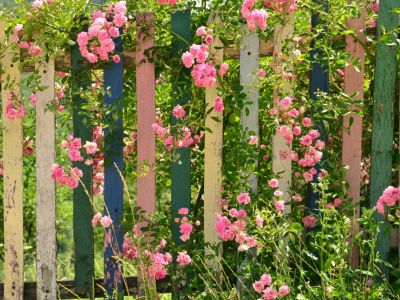Things to Consider About Flowering Fences
Almost everyone loves flowers. If you have an old, unkempt fence, cover it in blooms. Flowers to cover fences may be vines or shrubs, and they are the perfect cover up for a divider that is past its prime. Flowers that climb fences are another option to beautify an eye sore. Using flowers along fences can pretty up the boundary. They will also attract bees and other pollinators to help your veggies and other flowers produce. You may want a plant that will produce a boundary, flowers that grow over fences, or a blooming vine or shrub as a cover up. Before you select your plants, remember you will need to consider their mature height so you can get the correct number of the bloomers. Check the plant’s zone and lighting requirements. Additionally, do a soil test so you can amend the soil as needed to provide the perfect place for the roots. You may have to plant support for your plants as well, which is easier to set up prior to planting. If you want drip irrigation, set up the bare bones so it will be easy to direct water to each plant’s roots.
Flowers That Grow Over Fences
If you want flowers to cover fences, try vines. They are easy to grow, can be trained where needed, and bloom consistently. Most flowers that climb fences are sun lovers, but there are a few such as Clematis that perform well in lower light situations. You can even get an evergreen version of Clematis with creamy, lightly perfumed blooms that appear near the end of winter. Even annual plants can tumble over a barrier. Nasturtium and potato vine are two examples. Perennial plants don’t need to be replanted, however, and offer more value for the dollar.
Climbing roses Trumpet vine Honeysuckle vine Star Jasmine Carolina Jessamine Crossvine Wisteria
Growing Flowers Along Fences
Using shrubs along fences is another way to beautify the structure. Most shrubs are perennial if they are hardy in your zone. Some bloom in spring, others summer, while a few also blaze with foliar color in fall. Consider the size of the plant and its maintenance needs. If it needs to be pruned to keep it to size, make sure it blooms off of new wood the next season, so you don’t sacrifice flowers for tidiness.
Lilac Sweet Viburnum Azaleas Rhododendron Hydrangea Forsythia Deutzia Sweet shrub Abelia Quince Caryopteris Weigela Cinquefoil Camellia
